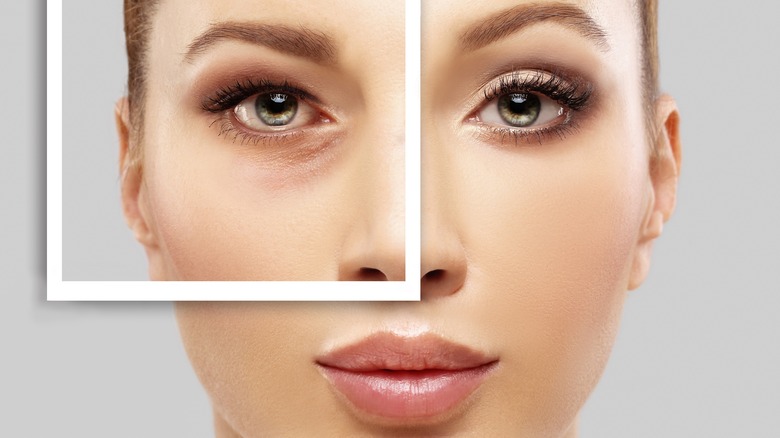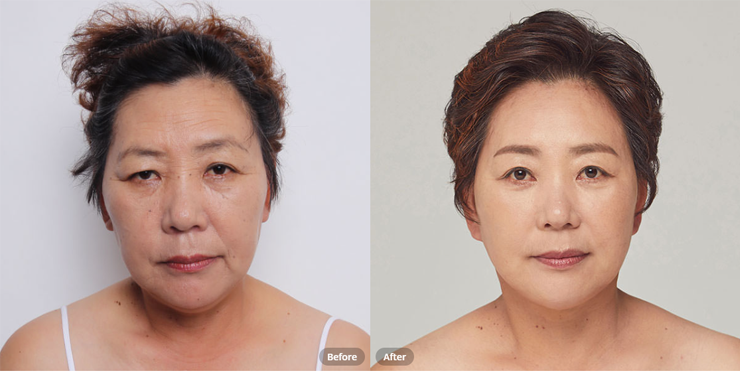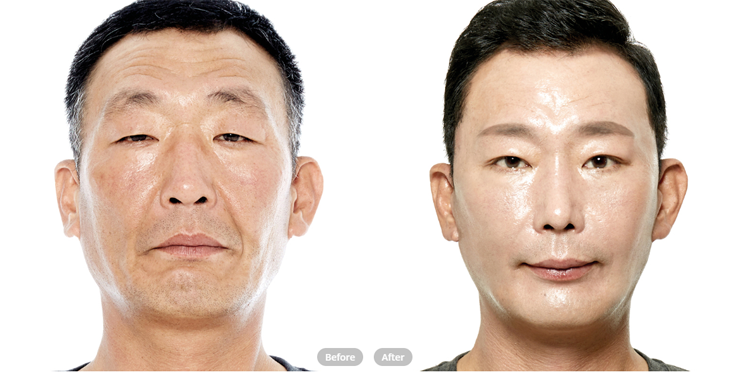Journal
Everything You Need to Know About Upper Blepharoplasty in Korea
2023-12-22
Eyes

Upper Blepharoplasty in Korea
South Korea is known for many things including plastic surgery. Among the hundreds of different procedures, the shaping of the eyelid is one of Korea’s specialties. Upper blepharoplasty is an eyelid procedure that aims to improve the sagging skin of the upper eyelids. In eyelid surgery, there are a variety of procedures. This article will focus on upper blepharoplasty in Korea including the surgical techniques involved, after-surgery precautions and care, and the potential benefits and risks.
Understanding Upper Blepharoplasty
Many people often confuse upper blepharoplasty and double eyelid surgery. While both procedures focus on the upper eyelids, and you may get double eyelids after blepharoplasty, these two procedures have different goals. Upper blepharoplasty aims to correct the sagging eyelid skin that has begun to droop due to age. This drooping and sagginess can cause people to have clouded vision due to the skin and muscle dropping and those who use their forehead or eyebrow muscles to open their eyes. Upper blepharoplasty is recommended for those who have saggy upper eyelid skin or sagging eye corners. It is not recommended for those whose eyes and eyebrows are too close together. On the other hand, incisional double eyelid surgery is the removal of excess skin and fat to redefine the upper eyelid crease. The eyelid fold is the main focus of double eyelid surgery.
Upper Blepharoplasty Surgery Procedure
The duration of lower blepharoplasty is usually between 45 minutes to an hour. Depending on the patient, the procedure can be done together with other eyelid procedures. So, how is the procedure done?
- The surgeon will visually explain how they will do the procedure and the possible results depending on the shape of the upper eyelid and the amount of sagginess or excess skin you have.
- The doctor will then draw a line on your upper eyelids, which will serve as a guide throughout the procedure.
- Then, the doctor will make an incision and remove excess fats and skin.
- After the excess fat and skin is removed, the surgeon will stitch up the incisions.

Benefits of Upper Blepharoplasty
Upper blepharoplasty is a cosmetic procedure designed to address saggy and droopy skin on the upper eyelids. Here are some potential benefits of upper blepharoplasty:
- Improved Appearance: The primary goal of upper blepharoplasty is to enhance the aesthetic appearance of the eyes by removing excess skin and fat, which can make the eyes more youthful and alert.
- Correction of sagging and drooping: The procedure effectively corrects sagging and drooping of the upper eyelids, which can be caused by aging, genetics, or other factors.
- Wider field of vision: in cases where excess eyelid skin obstructs the visual field, upper blepharoplasty can help improve peripheral vision and overall visibility.
- Minimization of fine lines and wrinkles: the removal of excess skin can help minimize the appearance of fine lines and wrinkles on the upper eyelids, contributing to a smoother and more youthful appearance.
- Long-lasting results: while the aging process continues, the results of upper blepharoplasty are generally long-lasting, providing enduring improvement to the appearance of the eyes.
- Minimal downtime: compared to more extensive facial surgeries, upper blepharoplasty typically involves a shorter recovery period, allowing patients to resume their normal activities relatively quickly.
It is important to note that individual experiences may vary, and the decision to undergo upper blepharoplasty should be made after thorough consultation with a qualified and experienced plastic surgeon. They can assess your specific needs and provide personalized recommendations based on your facial anatomy and desired outcomes.
Risks and Considerations After Upper Blepharoplasty
- Overcorrection or Undercorrection: the surgeon may overcorrect or undercorrect the amount of tissues removed, leading to suboptimal aesthetic results. Additional procedures may be required to address this.
- Swelling and Bruising: bruising and swelling are common after surgery and vary among individuals. While they are temporary, the duration can be longer for some patients.
- Dry Eyes: Temporary or, in rare cases, prolonged dry eyes may occur as a result of disruption to tear production during surgery.
- Asymmetry: Achieving perfect symmetry is nearly impossible for any procedure because our faces, in general, are not symmetrical. Therefore, there may be slight differences between the two eyes in terms of shape, size, or positioning.
- Scarring: Although efforts are made to place incisions in natural creases to minimize visible scarring, scarring is an inherent risk of any surgery. Individuals who are prone to develop hypertrophic or keloid scars are at a higher risk.
Individuals should have a thorough consultation with a certified and experienced plastic surgeon before deciding on upper blepharoplasty. The surgeon can assess the individual's health, discuss potential risks, and provide realistic expectations for the outcome of the procedure.
Upper Blepharoplasty Recovery
After upper blepharoplasty surgery, you may have swelling, bruising, and tightness in your upper eyelids and the surrounding areas. Before being discharged from the clinic, you will get prescribed oral pain medication and antibiotics. You will be taught how to properly administer your eyedrops and apply the ointments. The most important instructions to follow are those given to you by your doctor.
Here are some precautions you should follow:
- Clean and disinfect your incisions based on your doctor's instructions
- Avoid strenuous exercises and activities while your eyelids are healing
- Avoid any saunas or excess humidity
- Sleep with your head elevated
- Avoid bending forward or putting any pressure on your face for one month after the surgery
- While there are no food restrictions, try to avoid salty or spicy food, as it will not help with the swelling
- Protect your eyelids from the sun by using sunglasses or sunscreen
- Eat a healthy, well-balanced diet while you are healing
- Try to walk around as it will help with the swelling
Upper Blepharoplasty Before and After
Before undergoing upper blepharoplasty, individuals often experience sagging and drooping of the skin on their upper eyelids, which can contribute to a tired or aged appearance. The excess skin may obstruct the natural contours of the eyes and, in some cases, affect peripheral vision.


Check out more before and after pictures here.
After upper blepharoplasty, patients typically notice a significant improvement in the appearance of their eyes. The eyes appear more alert, youthful, and refreshed, with a reduction in sagging skin and puffiness. The procedure not only enhances aesthetic harmony but may also contribute to improved vision. While there is a brief recovery period, the long-term results are often satisfying, providing increased self-confidence and a more vibrant overall look. If you are considering upper blepharoplasty surgery in Korea, consult with our specialists at Docfinderkorea.
Back


